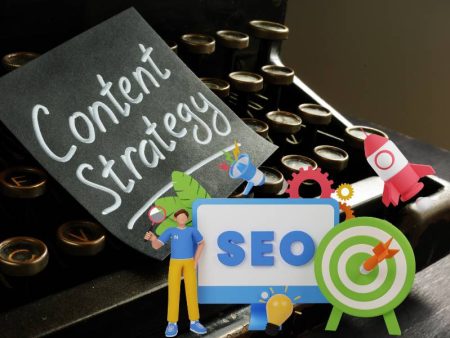Ever sat staring at a spreadsheet full of backlink prospects, wondering if smart AI could just do it for you? In 2025, AI isn’t just generating content—it’s auditing your backlinks, crafting outreach emails, and even analyzing competitor link profiles. But… is it truly helping—or setting you up for disaster? Let’s look at the time-saving wins, the lurking risks, and how to stay human-centric in your link-building game.
🔍 Case Study Start: The Bottleneck Moment
At a conference last year, I met Jake, a mid-sized startup’s head of marketing. He was drowning:
- Hundreds of backlink opportunities
- Limited budget and outreach capacity
- Compressed timeline for ranking improvement
He said, “I just want a tool where I paste my domain and get a prioritized list along with outreach templates.” And later that weekend, we tested AI Keyword Generator SEO—yes, even though it’s for keywords, it had backlink idea reuse built-in. It scanned SERPs and competitor domains, suggested outreach opportunities based on high domain authority, and flagged topic relevancy.
It gave us instant prioritization—“Focus on these 20, drop those 200 irrelevant ones.” We felt relief; it was less noise, more sense. But could it go deeper?
The Smart Audit: AI-Driven Link Profiling
Allow me to introduce AI SEO Agent—a tool that goes deeper:
- Crawls your competitor backlink profiles
- Highlights gaps in thematic relevance
- Flags ‘toxic’ links that harm trust
- Suggests outreach timing (“new site, so email this month”)
Jake used it and found that 60% of his domain’s links were low-value directories or irrelevant guest posts. So we scrapped those, focused on quality tech-relevant blogs, and sent AI-generated—but human‑approved—outreach emails. A month later, we saw improved link quality and a small lift in rankings.
That was the “time-saving sweet spot”—fast data, but only after human review.
x
Just because AI spots toxic links doesn’t mean you delete automatically—reviews prevent mistakes.
x
We’re relying on judgment—not rushing the trigger on cleanup.
Non‑Linear Outreach Workflow
Here’s how our process actually flowed:
- Run AI Overviews SEO Optimizer to understand domain-level gaps
- Let it summarize where competitors get links from
- Use AI SEO Agent to flag top 20 opportunities and draft initial email
- Manually review each opportunity for brand fit
- Personalize email with anecdote or referral quote
- Send and track reply rate
- Follow-up sequences drafted via AI but reviewed manually
This bouncing back and forth—it’s not workflow by checklist. It’s messy, adaptive, and yes, more effective.
Emotional Banter: Outreach Realness
Let me share a real example:
AI (initial draft):
“Hi Jane, I noticed your article about JavaScript frameworks—would you consider adding our case study on XYZ?”
My marketer-self chuckled—seriously, Xanax for SEO?
I rewrote it:
“Hey Jane! Loved your deep dive on JS frameworks—really resonated. We recently mapped performance across Vue/React/Svelte with XYZ. Mind if I share a case study to complement your guide?”
This felt warm, respectful, relevant. AI got the base, but human tone won the moment.
Risks: AI Outreach Gone Wrong
Some of my friends—rising agencies—made mistakes:
- Auto-sending outreach without review
- Repeating phrasing or name errors
- Contacting irrelevant sites (e.g., pet stores for SaaS links)
- Using AI templates filled with hallucinated data
They burned goodwill. Backlink outreach isn’t just numbers—it’s respect. And when AI does the heavy lifting, you still need to check that each email is appropriate, accurate, and human-friendly.
Emotional Nuance: Avoiding Transactional Tones
Outreach isn’t transactional—it’s relationship-building. Using AI, I always ask:
“Craft outreach tone that sounds like a warm introduction from a mutual friend.”
That signals AI to add an empathetic, not robotic, overture. It suggests:
- A compliment (“your recent annual tool overview was super helpful”)
- Relevancy point (“our case study builds on that”)
- A gentle ask (“would you like to review it for a backlink?”)
The emotional glue keeps it human.
Tracking Results and Adjusting
We measure:
- Open and reply rates
- One-off links vs published posts
- Rankings before and after
- Outreach volume vs reply performance
In Jake’s case, the updated process doubled reply rate—from 8% to 16%—and yielded links from three high-authority sites in eight weeks.
That one case made the AI tools—in context—worth their weight in link juice.
When AI Over-promises
Let me be honest:
- AI can’t genuinely tailor outreach with actual references unless fed that info
- It might suggest sites that are dead or no-index
- It may not detect nuanced brand misalignment
- It can hallucinate “Your article on X is amazing” even if X doesn’t exist
That’s why human review must sit in each stage.
Filter, Don’t Skip
Here’s how I apply a safe rule:
Trust, But Verify—for every AI suggest:
- Check domain relevance
- Scan last three published posts
- Confirm site isn’t spammy (recent domain credibility check)
- Ensure email template matches brand voice
- Send—but track if it feels natural
We treat AI suggestions like junior teammates—they need supervision, training, and style guidance.
Scaling Responsibly
If you need to outreach at scale:
- Batch-prospect via AI
- Manual remove ~30% non-fit sites
- Use AI to draft templates per batch (with placeholders)
- Have human add 1-2 personal lines per email
- Monitor replies daily
- Pause if bounce or blacklisting surge
That mix keeps volume without going spammy.
The Ethical Angle: Be Respectful
Think of outreach like networking—not mass messaging:
- Always personalize
- Offer value to the recipient
- Say thank you—even in rejection
- Don’t send link-request blasts without context
AI can produce messages—but only you can ensure they show empathy and respect.
Final Takeaway
AI tools like AI Overviews SEO Optimizer, AI SEO Agent, and AI Keyword Generator SEO can seriously expedite backlink analysis and outreach. But they’re not replacements—they’re assistants. The key is:
- Use AI for data, prioritization, templates
- Always review manually
- Add human emotion, context, personalization
- Track results
- Adjust based on feedback (positive or negative)
In short: AI is time-saving. But left unchecked? It can get risky, robotic, or even toxic.
TL;DR
- AI tools help identify backlink gaps, toxic links, and outreach targets
- Always review AI output—check for relevancy, tone, accuracy
- Personalize AI-drafted emails with your voice and respect
- Track response rates, adjust tone/volume
- Ethical outreach strengthens relationships, builds brand trust
Your Turn
How have you managed backlinks with AI? Did a template make outreach awkward? Or did AI speed your process without losing respect? Share your story—the wins, the tone tweaks, or the “let’s fix that email before sending!” moments. We’ll learn from each other—and keep SEO human.


